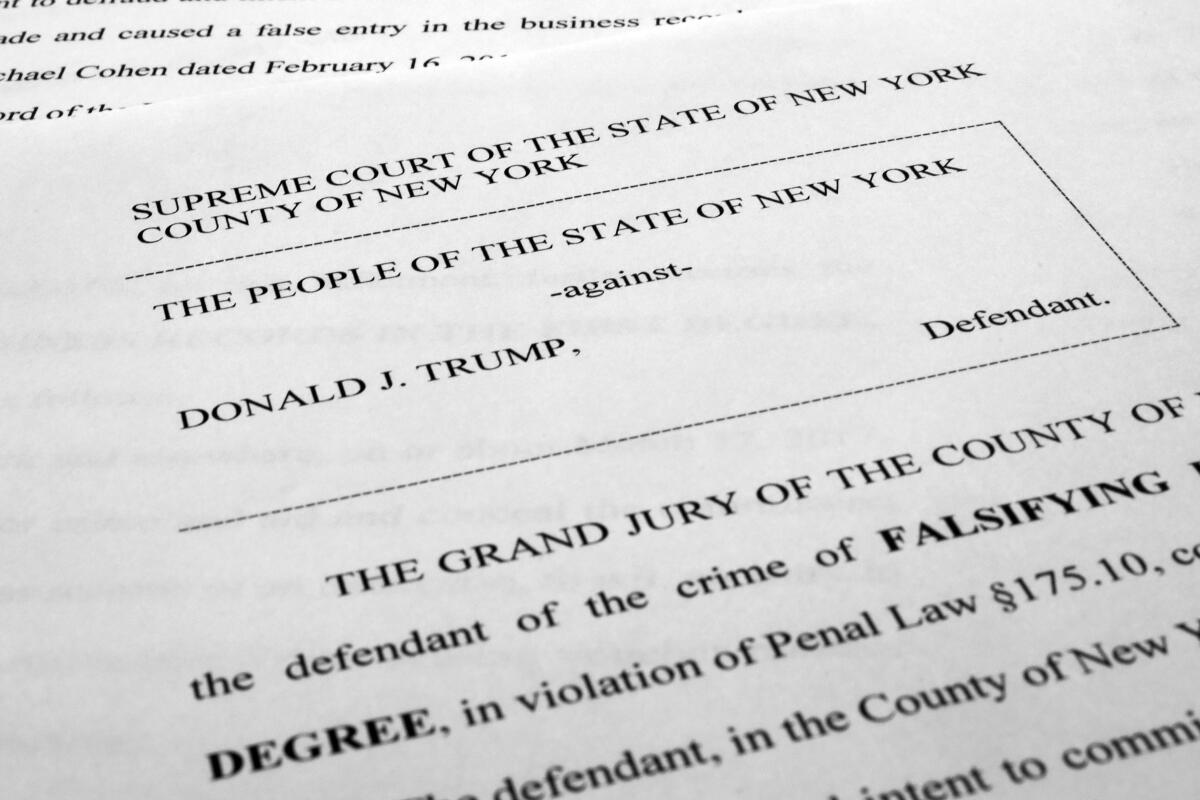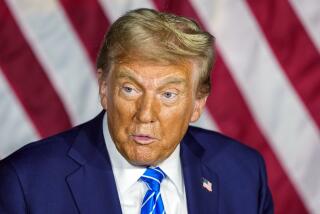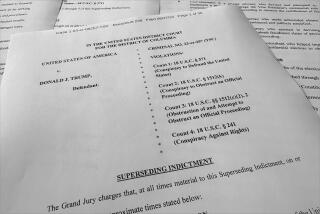Column: Three takeaways from Trump’s historic arrest and arraignment

- Share via
Since it became clear that Manhattan Dist. Atty. Alvin Bragg intended to charge Donald Trump with crimes growing out of hush money payments to Stormy Daniels, close observers have wondered how he would frame the offenses and solve the problems that apparently led him to mothball the indictment shortly after he took office. With Tuesday’s dramatic arraignment of the former president, Bragg revealed his hand — except, in important ways, he didn’t.
The indictment itself is about the least it could be — basically a recitation of 34 counts of falsifying business records that vary only by date. That is not necessarily a criticism: It’s quite clear that Bragg made a strategic decision to sketch the contours of the basic charges and leave it to future proceedings to fill in the picture.
But along with the indictment, Bragg also filed a full-bodied statement of facts. It’s not part of the indictment nor, a footnote makes clear, a complete recitation of evidence. But it nevertheless reveals answers to basic questions surrounding the case.
First, and most important, Bragg intends to prove the charges as an extended course of conduct — namely, as the statement says, “a catch-and-kill scheme to suppress negative information.” In other words, the case is about much more than a payment of hush money to Stormy Daniels or the “accounting error” that Trump’s allies are purporting it to be.
It is instead a whole series of allegations beginning in 2015 and involving several partners in crime — you might call them “co-conspirators” except that Bragg does not — for the very particular purpose of influencing the 2016 election. Bragg emphasized this in his news conference Tuesday, stating that the evidence would show Trump’s motive “was to cover up crimes relating to the 2016 election.”
The scheme began, according to Bragg, with a meeting with the then-chief executive of the National Enquirer’s parent company, David Pecker, and an agreement to help Trump’s campaign by suppressing damaging stories. The statement refers to very strong evidence of this purpose, including the damning detail that Trump instructed his lawyer Michael Cohen that “if they could delay the payment [to Daniels] until after the election, they could avoid paying altogether, because at that point it would not matter if the story became public.”
This underscores why Pecker was the last substantive witness we know to have testified before the grand jury. It’s likely he will be the second most important witness after Cohen.
Second, anticipating criticism for charging 34 instances of falsification of business records, Bragg stressed that Manhattan is the financial center of the world and accurate bookkeeping therefore must be enforced. Falsifying such records in New York is a felony provided it’s done to further other crimes, and Bragg chose not to specify what he alleges those crimes were within the indictment. As he pointed out, the law doesn’t require him to.
But in his statement of facts and news conference, Bragg suggested that the other crimes are campaign finance violations, both (or either) federal and state. That will give rise to several significant legal disputes that are on the immediate horizon. Briefly, both state and federal campaign finance violations raise legal uncertainties about whether they are sufficient to make the falsification charges felonies. Bragg has the better arguments on these questions, but the indictment does nothing to put them to rest.
Prosecutors could also argue that the falsification furthered a conspiracy to influence an election by “unlawful means,” which is a crime in New York. The fight here will be over what constitutes such unlawful means. Again, Bragg is well positioned, but Trump’s lawyers can still make a forceful argument.
Third and finally, the skeletal nature of the indictment means we can expect a challenge — in legal terms, a “bill of particulars” — seeking to force the prosecution to flesh out the charges.
Bragg seems to have made a tactical decision to preserve maximum flexibility and make pivotal legal decisions no sooner than necessary. That could serve the prosecution well given that New York is sparing in permitting immediate appeals, which have often enabled Trump to delay accountability. The district attorney’s strategy could help the trial reach a verdict sooner rather than wait for appeals to play out.
Bottom line: Bragg chose both to lay out the extent and gravity of Trump’s offenses while also maintaining maximum flexibility to alter legal course. Given the unpredictable and hugely challenging nature of this historic case, that’s a sensible approach.
Harry Litman is the host of the “Talking Feds” podcast. @harrylitman
More to Read
A cure for the common opinion
Get thought-provoking perspectives with our weekly newsletter.
You may occasionally receive promotional content from the Los Angeles Times.











